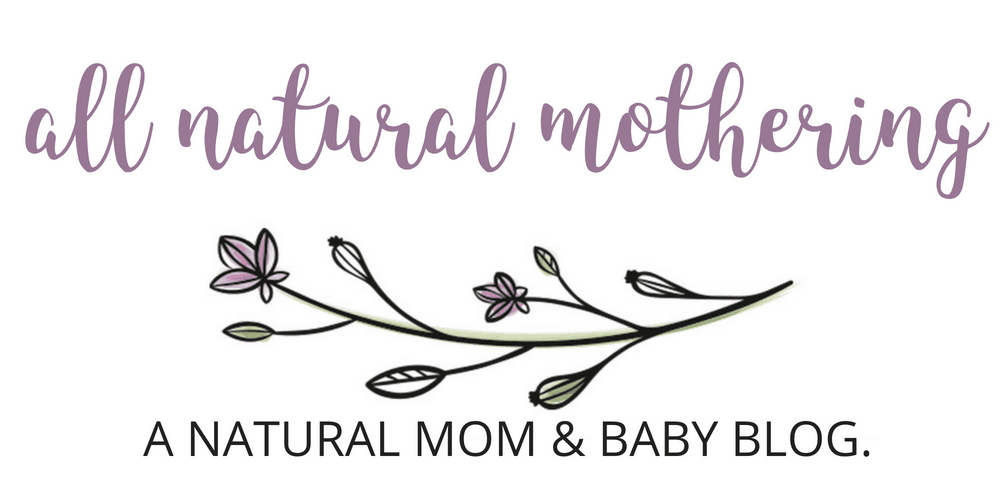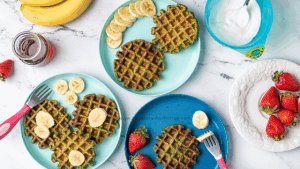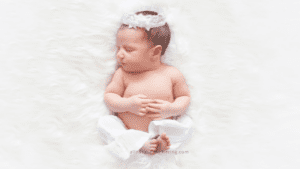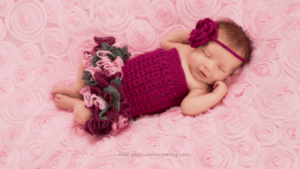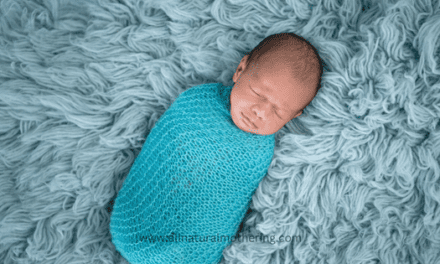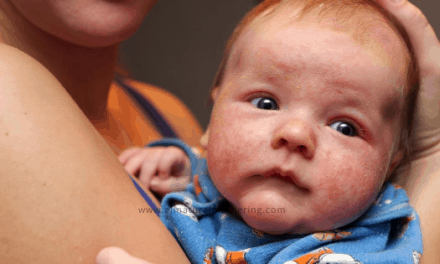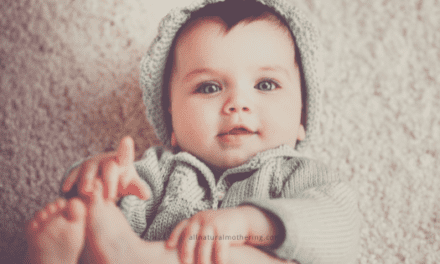So many moms I have talked to, who wanted to cloth diaper their child, were worried about how to clean cloth diapers (especially poop!).
Washing cloth diapers, for some reason, construed as a complex task, when in reality it is not as overwhelming as people think it to be.
I always tell people that if you can wash regular clothes, then, of course, you can wash cloth diapers.
I agree that there certain things you can’t do when you are washing cloth diapers – like using fabric softeners and dryer sheets.
But given the adverse health effects of these extra unnecessary laundry products you shouldn’t really use it with your regular laundry anyways.
Before we begin, please note that no single wash routine will suit everyone.
There are so many other factors at play here, like your wash machine model, water hardness, the detergent you use.
Don’t feel disappointed if you don’t get it right the first time though.
Finding the correct wash routine does take some trial and error.
Let me also clarify that I’m not going to hand over a 10-page manual full of washing instructions.
The primary motive is to simplify the process and break it down so you can easily adapt it to suit your situation.
If you have trouble with your wash routine or if you feel lost, comment below or email me via my contact page and I will try my best to help you out.
Before you even begin with wash routine there are certain things you need to figure out.
1.Water Hardness:
Many will jump into washing cloth diapers without knowing their water hardness and end up battling with stinky diapers with ammonia residue. So I always tell people to start with testing the hardness of the water.
If you notice a build-up of white scum on your sink faucets or pipes, then this is because of the minerals in the hard water.
What is Hard Water?
Hard water contains minerals like magnesium and calcium that uses up the detergent which is supposed to clean your diapers.
When you continuously wash your diapers in hard water, a) they don’t get cleaned properly and b)the minerals in the water will settle over the diapers making them less absorbent over the time.
You can correctly measure the hardness of your water. To do this, you can either call your nearest water softener company and ask them to test your water.
Another way to do a home test is through online hardness test kit like this one. The home test with come with instructions on how to conduct the test and interpret the results.
Depending on the level of water hardness you can go for a water softener or choose a laundry detergent that will work well in hard water.
Borax is universally recommended to solve hard water issues.
Choosing the Right Detergent:
This topic deserves a separate post for itself. There is a notion that you need to buy a separate cloth diaper specific laundry detergent to wash cloth diapers.
That is not true.
However, keep in mind to not use any detergent that has fabric softeners.
In most cases, you can use your regular laundry detergent for diapers as well. There are so many options to choose from
Eco Friendly / Natural Cloth Diaper Detergent
I am always up for choosing natural detergents that are free of harsh chemicals.
Sometimes, your baby can be sensitive to strong chemicals that are usually found in mainstream detergents.
If you notice any skin irritations, eczema type rashes, then switching to a natural detergent might be helpful.
I have had huge success using this detergent, it is also bio degradable. I have heard great reviews on Rockin Green, this one is specially designed for hard water.
Main Stream Detergents:
You don’t have to spend extra money to buy natural detergents if you don’t want to.
Many mainstream detergents can be used successfully to wash cloth diapers.
The main stream detergents have surfactants and enzymes that does a better job in cleaning with hard water.
Some of the popular brands that work well with cloth diapers are Tide, Gain, Purex and Persil.
Cleaning Poop:
Biggest question in everyone’s mind is how to you wash poop with cloth diapers.
Hmm..to make my point straight and simple. I’m going to ask you, what would you do when there is poop in your baby onesie or on a crib sheet?
You dump the solid poop in the toilet, give a quick rinse using your hands and wash them in your regular laundry, right?
Well, that’s exactly you do with cloth diapers.
I always rinse the poopy diapers right away ( or as soon as I can). Many just store it in a small wetbag and rinse it all together at night. Once I clean the poop, I toss it in a diaper pail or large wetbag and it sits there until wash day.
There are different ways people like to deal with poop.
1. Sprayer: I started using sprayer after my babies started solids. And I never went back. I love love love this sprayer and this spray shield. I attached the sprayer near the toilet, hook the dirty diaper to the spray shield and spray the poop into the toilet bowl. Easy Peasy!
2. Liners: Liners are thin non absorbent material that goes over the diaper to catch poop. They can be reusable liners that can be washed and re -used or disposable liners. We use disposable liner with daycare diapers and they work well.
3. Dunk and Swish: For this method, you would have a bucket, fill it with water and swish the diapers into the diaper and dump the water into the toilet. Many have a designated gloves to wear when they are rinsing poopy diapers by hand.
Sample Cloth Diaper Wash Routine:
Now we have tackled the main issues that might cause problems with cloth diaper laundry let’s go ahead and learn how to wash cloth diapers.
1. Cold Pre Wash
I always do a short cold pre-wash cycle with very little detergent before I even begin my main wash. What this does is removes most of the pee/ poop from the diapers, loosen things up so it gets washed thoroughly in the main wash.
Another reason I do a cold pre-wash is to prevent stains from setting in. I wash every 2 or 3 days and i usually do a large load (around 20 diapers with inserts)
2. Hot Main Wash
Main wash is always the longest cycle. In my case it is the ultra clean cycle. I choose a hot cold option that means hot wash and cold rinse (included in the wash cycle). I also turn on the heavy duty knob. Depending on the machine you use, there will be a option to select the agitation speed. You have to choose the one that is meant to wash heavily soiled clothes.
It was suggested that you should use less detergent to do cloth diaper laundry. This advice doesn’t make any sense at all. Cloth diapers need to be washed with adequate detergent that you would typically use for a heavy soiled set of clothes. So, go ahead, use the amount of detergent suggested by the brand for heavy soiled clothes.
If you have hard water, then add borax along with the detergent in the wash cycle . The amount of borax you would use will depend on the hardness of water.
Here is how much Borax to use for Cloth Diapers:
- If your water hardness is 60-120ppm, add 1/2 cup borax to the main wash only.
- If your water hardness is 120-250 ppm, add 1/4 cup borax to pre-wash and 1/2 cup to the main wash.
- If your water hardness is greater than 250 ppm, add 1/2 cup borax to both pre-wash and main wash. (source)
3. Rinse
I almost always only do one rinse that comes with the main wash. I don’t do any additional rinses. If you have a hard water, it is better to avoid doing any extra rinses, as the minerals in the water can deposit back on the diapers.
Even with soft water, there is no real need to do extra rinses, if you are using the right amount of detergent. If you see a sudsy water after the first rinse, do another rinse and adjust the detergent level the next time you wash.
4.Dry
I used to hang dry most of my cloth diapers and inserts. Now that I’m back to work and forget to do my cloth diaper laundry on time, I use the dryer. I still hang dry all covers pockets and aios.
I tumble dry all the inserts. and hang to dry those which need extra time to fully dry. I use wool dryer balls (this one made of 100% pure New Zealand wool) to fluff up my cloth diapers and reduce drying time. I have a clothes line in my basement where I hang dry during winter months. If you live in an apartment, you are use a hanging clothes drying rack. Choose a stainless steel rack, like this one, it performs much better than the plastic ones.
Washing Cloth Diapers in HE Machines:
If you have a HE front or top loading machine, there is not much difference in the way you do cloth diaper laundry, You would still do a short cold pre-wash and long hot main wash.
HE machines are designed to use less water to conserve water and energy. But, for cloth diapers you need more water and proper amount of load size where the diapers can rub against each other.
Most HE machine work great when they are 2/3 to 3/4 full for the main wash. If you don’t have enough diaper, add baby clothes, wash clothes, cloth wipes or small towels to bulk up the load.
Also, once the pre-wash is done, make sure to peel off the diapers stuck to the drum before you turn on the main wash.
Here is a general wash routine for HE machines:
- Short Cold Pre – Wash (with little detergent and borax,if needed)
- Bulk up the load, if needed. Remember HE machines work well when they are 2/3 to 3/4 full.
- Peel the diapers that are stuck to the drum
- Add detergent and borax (for hard water)
- Long Hot Main wash
- Turn off any extra rinse options (you just need one rinse after the wash)
- Tumble dry the inserts and hang dry the covers.
Washing Diapers in Top Loader (with central agitator):
If you have machine with a central agitator, you don’t have to worry about peeling the diapers after the cold wash.
The agitator will pull the diapers by itself. The one thing you need to note in these type of machines is that to see if they have enough water.
What you need is a ‘diaper stew’.
Once you load the diapers in the drum and fill it with water, you would press down the diapers and see if there is about 2-3′ water above diapers.
Another easy way to check for enough water is by running the wash cycle and see if the diapers are being pulled in and are rubbing against each other.(source)
Here is a general wash routine for Top loading machines:
- Short Cold Pre – Wash (with little detergent and borax,if needed)
- Bulk up the load, if needed. Remember to see if the diapers are being pulled in and are rubbing against each other.
- Add detergent and borax (for hard water)
- Long Hot Main wash
- Turn off any extra rinse options (you just need one rinse after the wash)
- Tumble dry the inserts and hang dry the covers.
Let’s Wrap Up:
I hope this post wash simple and easy to understand.
Cloth diaper laundry doesn’t have to be complicated.
There are sure some don’t like not using fabric softeners or dryer sheets(use wool dryer balls instead).
Other than that it is pretty straight forward.
Spend some time doing the hard water test and thinking about the detergent that will work for you.
Once that’s done, use the guide above and wash your wash diapers.
If you have any more questions, comment below and I will reply as soon as I can.

